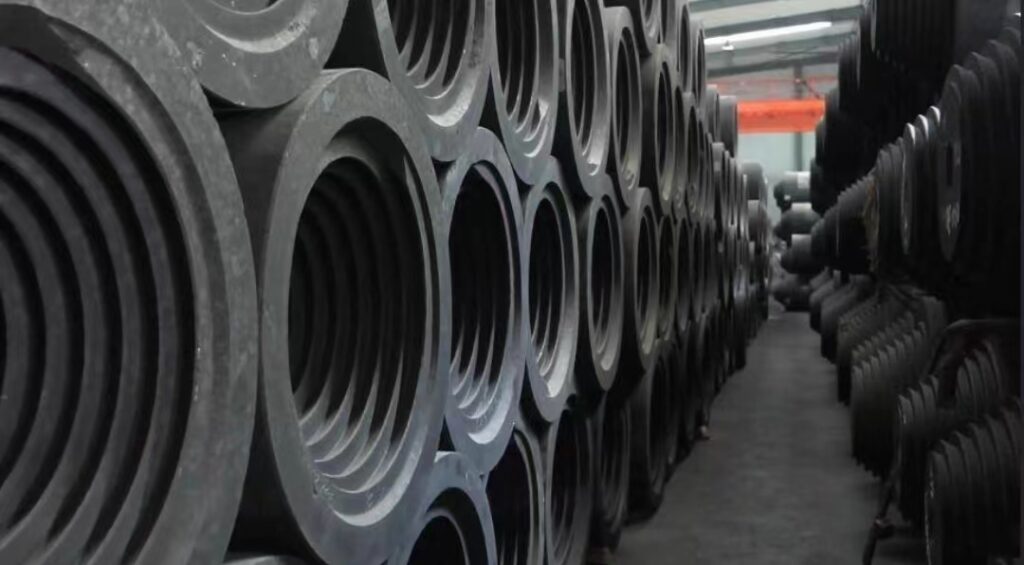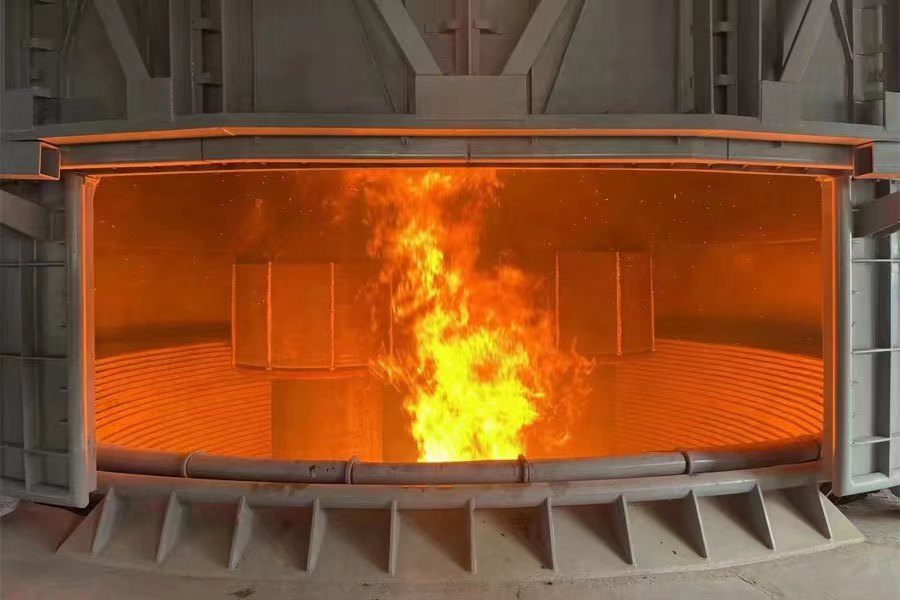Apa itu elektroda karbon?
Sebagai elektroda konduktif untuk tungku busur terendam, elektroda karbon banyak digunakan dalam proses peleburan logam atau non-logam seperti silikon industri, ferroalloy, kalsium karbida, fosfor kuning, dll. Ini adalah bahan konduktif karbon yang terbuat dari antrasit terkalsinasi listrik, kokas minyak bumi, fragmen grafit, pitch tar batubara, dll. Sebagai bahan baku utama, melalui batching, pencetakan, pemanggangan, dan pemrosesan mekanis.
Daftar Isi
Beralih
Apa saja jenis elektroda karbon?
Elektroda karbon dapat dibagi menjadi dua kategori menurut lingkungan aplikasinya: S grade adalah elektroda karbon biasa, cocok untuk tungku busur terendam untuk produksi silikon logam, fosfor kuning, ferroalloy, kalsium karbida, korundum, dan produk lainnya; G grade adalah elektroda karbon khusus, cocok untuk tungku busur terendam dengan beban arus tinggi.
Karakteristik elektroda karbon
Resistivitas rendah.
Konsumsi mandiri elektroda yang rendah.
Kepadatan volume tinggi.
Kadar abu rendah.
Sifat antioksidan yang baik.
Penghematan daya yang signifikan.
Keunggulan elektroda karbon.
Pertama, karena produksi elektroda karbon tidak memerlukan proses grafitisasi, maka biayanya lebih rendah daripada elektroda grafit.
Di satu sisi, biaya konstruksi bengkel grafitisasi tergolong tinggi. Juga akan ada masalah seperti biaya ekspansi dan catu daya di masa depan. Selain itu, grafitisasi menghabiskan banyak listrik. Konsumsi daya per ton produk adalah 4500kwh, dan setiap kilowatt-jam dihitung sebesar 0,08 USD, yang meningkatkan biaya per ton sebesar 373 SUD. Oleh karena itu, elektroda karbon tidak perlu digrafitisasi, dan harganya juga lebih rendah daripada elektroda grafit.
Kedua, pada tungku busur terendam dengan kapasitas yang sama. Dibandingkan dengan elektroda grafit, diameter elektroda karbon bisa dibuat lebih besar.
Elektroda karbon Φ780-Φ1400mm dapat diproduksi, dan elektroda grafit hanya bisa Φ700mm. Hal ini memperlebar pita busur dalam tungku, menstabilkan busur, dan memastikan efisiensi peleburan panas. Oleh karena itu, output produk meningkat dan konsumsi daya produk berkurang.
Penggunaan utama elektroda karbon
Pengecoran metalurgi, elektroda karbon mengandung grafit, yang juga merupakan konduktor listrik yang baik dan dapat melebur logam pada suhu tinggi.
Di bidang elektrokimia, ini digunakan dalam baterai untuk berpartisipasi dalam proses pengisian dan pengosongan. Karena elektroda karbon bersifat inert, elektroda ini direduksi untuk menghasilkan senyawa organik dan logam yang dilapisi dalam reaksi kimia.
Dalam industri elektrolitik, elektroda karbon digunakan dalam proses elektrolitik seperti pengolahan air dan pelapisan listrik.
Pengelasan dan pencungkilan: Dalam proses ini, panas busur dihasilkan antara elektroda karbon dan logam untuk menyelesaikan pengelasan dan pemotongan.
Dibandingkan dengan pasta elektroda
Elektroda karbon dapat meningkatkan efisiensi termal tungku busur terendam selama penggunaan. Termasuk mempersingkat waktu peleburan dan meningkatkan output. Dan mudah untuk menghasilkan elektroda karbon berongga. Ini akan membantu perusahaan ferroalloy menambahkan berbagai bahan baku kapan saja.
Selain itu, sistem pasta elektroda dimasukkan ke dalam cangkang elektroda yang dipasang pada tungku selama penggunaan. Asap aspal dalam jumlah besar akan dikeluarkan selama proses produksi, yang secara serius mencemari lingkungan dan mempengaruhi kesehatan manusia. Konservasi energi dan pengurangan emisi adalah tren umum. Jadi, sangat penting untuk mengganti pasta elektroda dengan konsumsi energi tinggi dengan elektroda karbon.
Terakhir, elektroda karbon tidak mudah patah saat digunakan, dan kerusakan lunak dapat dihilangkan, serta kehilangan non-alamiahnya lebih sedikit.
Kesimpulan
Elektroda karbon, sebagai elektroda konduktif untuk tungku busur terendam. Mereka dapat mengurangi biaya dengan lebih baik, menghemat energi dan mengurangi emisi, serta meningkatkan efisiensi peleburan.


